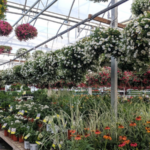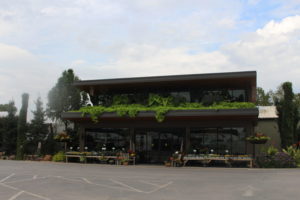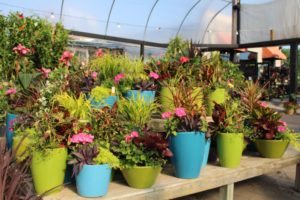
Making Data Driven Plant Decisions
Facebook, Amazon, Apple, Netflix, Google (FAANG as they’re referred to by Silicon Valley dwellers). We look at most of these companies and think what sets them apart is their products. They operate in technology; we operate in plants.
From a sheer revenue standpoint, you’re right; we’re never going to compete with them. However, when we take a deeper look at what puts them on top it is not the products at all.
Amazon is an online marketplace. They weren’t the first, they won’t be the last.
What these companies do better than anyone else is understand exactly what the consumer wants. They do this by using data to make fact-based business decisions. It’s time our industry starts applying that same logic to consumers. Going with our gut feelings, and basing decisions on emotions is too risky in today’s business environment.
Use the Available Resources
What’s great is that there are already plenty of resources out there to help show you (factually, based on data) what your consumers are interested in already. In fact, you may be currently sitting on a stockpile of that information and might not realize it. At GrowIt!, we provide consumers a platform to share things that they like and to ask questions to their planting neighbors.
In return, we take in hundreds of thousands of data points every day. We use that data to better understand consumer plant interests, habits and trends. It also allows us to gain insight into consumer plant problems. We’ve learned a ton about consumers’ plant habits in the last five years, and want to bring some of that information back to you.
Before we dig into some interesting plant trends that we’ve seen building (or falling) in recent years, let’s cover one thing up front. Take a deep breath and say this with me, “Millennials love plants.”
What Plants are Hot?
Remember 2012? We were postrecession but things just weren’t picking back up the way we wanted them to or thought they would. Enter the scapegoat: Millennials. This new generation of people just did not have an interest in buying plants. WRONG. Millennials just didn’t want to buy the plants we were selling!
Here we are seven years later, in the midst of a houseplant revolution. Succulents are being sold at convenience stores and gas stations. The words Calathea, Peperomia and Monstera are common fodder for Instagram hashtags.
I want to make this clear, I’m not here to tell you that houseplants are extremely popular. You already know this. Houseplants of any sort (though foliage plants seem to be more popular than orchids) are the hottest thing on the plant market right now.
That being said, I’m here to offer you some insight into the other stuff. So, after removing houseplants from the equation, what are people planting these days?
We can judge a lot about consumer interest by taking a look at the photos that people upload to GrowIt! We like to think of it in two ways. Either someone is proud enough of their accomplishment to upload what they’ve grown, or they were so intrigued by something that they saw while walking around, that they had to snap a picture of it, and ask the GrowIt! community for more info.
There are definitely plants that have not changed very much since we launched. Things like strawberries and Rose of Sharon have fluctuated very little in interest level in recent years, but interest remains generally high. Our suggestion for plants like this is: stay the course, and don’t get crazy.
These are good plants to have, but not something to ramp up inventory in (unless you’re low already) or spend marketing dollars on. If you asked a first grader to name three plants, they’d probably say something like rose, apple and maple. If you asked us about classic plants that are seeing a noticeable surge in the past year, those are three that we would tell you as well.
Apples are seeing a resurgence along with many other tree and shrub fruits. Raspberry, blackberry and even mulberry have become increasingly more prominent. The rise in interest in roses is an interesting one. In 2016, we saw rose as one of the top plants added to the app. Then in 2017, the numbers fell to a third of what they were in 2016. However, in the following year (2018), we saw rose interest jump back up by more than 25%, and as of May 1, 2019, rose uploads and conversations are on track to surpass 2018 numbers.
When it comes to color interest in roses, it’s probably no surprise that red tops the list. Bright “lipstick” pink is on the rise, and surprisingly yellow and salmon are declining. This is intriguing as yellow is the most popular flower color app wide.
Other plants that are showing increasing amounts of interest are lupine, columbine, hypoestes and alocasia. With the latter two we have definitely seen an interest spike due to the rise in popularity of traditional houseplants. Hypoestes and alocasia are two plants that allow consumers to flirt with the indoor/outdoor boundary.
Trending Up or Trending Down?
Another piece of the equation is knowing what trends are dissipating. What was popular that seems to be fading? In 2015 and 2016, the No. 1 plant type added to GrowIt! was daylily. We saw daylily interest levels drop 20% in 2017 and another 30% in 2018. There’s still plenty of time left in 2019, but the decline is looking to continue based on our figures.
We’ve also seen a noticeable decrease in uploads of osteospermum, Shasta daisy, clematis and Gerbera daisy. All of these plants have shown slow but steady decline over the last three years. We’ve seen steady interest levels in most herbs, and even a strong increase in interest in sorrel (if you want to classify it as an herb), but one noticeable decrease is in the interest in traditional sage.
While the classic staple declines, gains in pineapple sage have taken its place. Looking at all of these swings in trends it is also important to rationalize and hypothesize why these trends occur. Consumers don’t all of a sudden think “I’m going to buy a lupine plant today.” There are many different underlying factors at play. Fashion trends, décor trends, texture trends, color trends, all of that creates a demand relationship with products in our industry, and it’s important we stay vigilant and trust the data!

















 Videos
Videos





